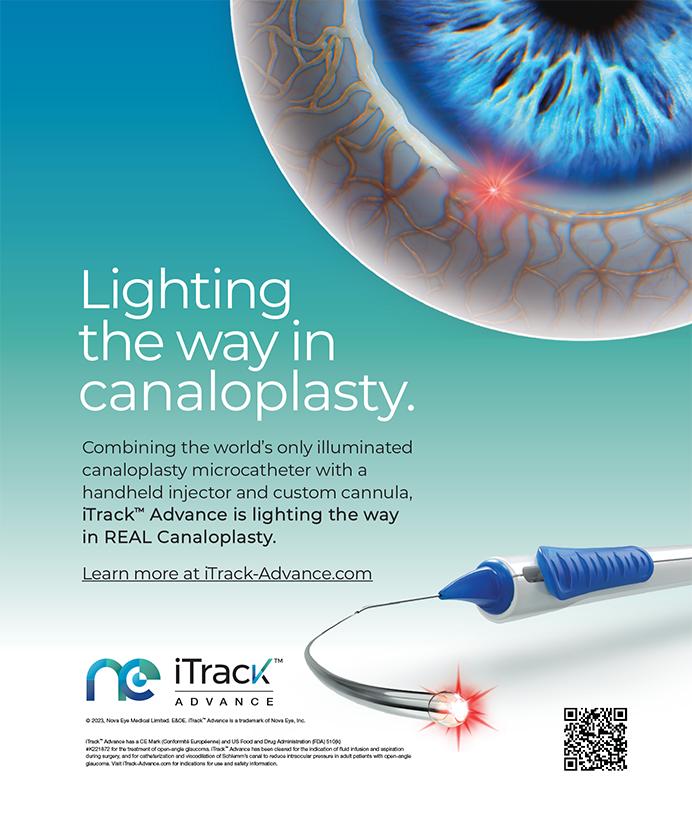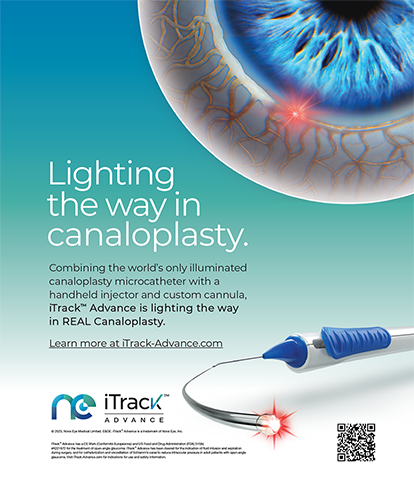This article recounts our experience concerning the 2005 nationwide outbreak of toxic anterior segment syndrome (TASS) related to Endosol balanced salt solution (manufactured by Cytosol Ophthalmics, Lenoir, NC; distributed by Advanced Medical Optic, Inc., Santa Ana, CA). As part of this outbreak, we discovered our first nine cases of TASS on September 22, 2005. One surgeon in our center urgently reported these cases on the first postoperative day. He described a significant reaction in the anterior chamber in seven patients and fibrin in two patients. All nine patients were referred to a retina specialist, who performed a vitreous tap with intravitreal antibiotics in the two severe cases (fibrin) and suggested medical treatment and close monitoring for the other seven milder cases (significant anterior chamber reaction).
ACCOUNTING FOR PATIENTS' OUTBREAKS
The trending and tracking of patient information on our endophthalmitis investigation form began immediately after the discovery of our first cases of TASS. We also initiated a top-down staff review of all aseptic techniques, terminal cleaning of the ORs, and instrument processing protocols. Sterilization logs and spore tests for these specific cases were the first for us to review, and all were normal.
No common denominator was initially identified as the cause of the TASS outbreak. However, there was an onset of symptoms of TASS within 12 to 18 hours after surgery. We took more than 50 environmental cultures of our surgery center. Walls, machines, tables, mayo stands, air vents, etc, were all cultured and showed no growth. We began spore testing every instrument load that went into the autoclaves, and, again, all were normal. We did a top-down terminal cleanup of each OR and changed the cleaning solution. We scrupulously examined our course of cleaning and processing the instruments and made changes along the way. We thought that the problem might be related to an enzymatic cleaner used to decontaminate the instruments, but, after switching the agent, TASS cases still emerged. Next, we began to document the specific lot numbers of any product that went into an eye or onto its surface, including viscoelastics, medications, solutions, and lenses.
For 6 weeks, we continued to see isolated cases. In total, we discovered 37 occurrences out of 1,100 patients from September 22 to October 31, 2005. During that time, we initiated our own comprehensive internal investigation, through which we studied each reported case by looking for common threads and tracking the results on a spreadsheet.
IDENTIFYING THE CULPRIT
When we could identify no definitive cause, we contacted Nick Mamalis, MD, at the John A. Moran Eye Center in Salt Lake City. Dr. Mamalis received a grant from the ASCRS to study TASS outbreaks as well as endophthalmitis. At that time, we had 25 to 30 cases on our spreadsheet. We shared our findings with his team. At about the same time, we began to suspect that the balanced salt solution might be involved. Advanced Medical Optics, Inc., supplied 95 of our balanced salt solution. At first, we felt the solution was an unlikely cause, because the cases were sporadic. When we finally contacted the company by e-mail to ask if they had any reports of similar cases, we got a response from the corporate offices within 10 minutes. Executives from Advanced Medical Optics, Inc., disclosed that they were getting reports from other sites nationwide. They acknowledged probably 10 sites at that time with some 200 cases. Per its standard protocol, Advanced Medical Optics, Inc., immediately began coordinating with Cytosol, which conducted tests of samples received from suspected lots. After Cytosol's study results indicated no evidence of toxins, Advanced Medical Optics, Inc., began working with independent laboratories to define the breadth of the outbreak.
CASES OF TASS NATIONWIDE
The matter was discussed at our quarterly quality assurance meeting. Dr. Berke, Quality Assurance Chairperson, and David Nelson, MD, Medical Director, were actively involved. Dr. Berke posted a question on the American Glaucoma Society's and ASCRS' Web sites, and Mr. Nelson posted a similar question on our New York State ASC Society Web site. Soon enough, we began to hear of many more TASS cases and locations nationwide. We stayed in touch with Advanced Medical Optics, Inc., and introduced Dr. Mamalis to the company's clinical team that was investigating this outbreak. He then guided the company through the rest of the investigative process.
On November 1, 2005, we removed all of Cytosol's balanced salt solution from our shelves and switched to one manufactured by Baxter Healthcare Corporation (Vancouver, Canada). Advanced Medical Optics, Inc., also stopped shipping Endosol balanced salt solution and issued a safety alert on November 10 to eye surgeons and ORs nationally as well as to member lists at the AAO and ASCRS with a warning not to use the solution due to the TASS outbreak. On November 18, Advanced Medical Optics, Inc., issued a voluntary market withdrawal of all of its Endosol manufactured by Cytosol. We have had no cases of TASS reported since.
Following extensive testing and inspection of its manufacturing operations by the FDA, Cytosol initiated a recall on February 15, 2006, of all balanced salt solution manufactured at its Braintree, Massachusetts, facility.
The incidences we had of TASS responded well to high doses of steroids, and the patients have for the most part recovered well. Some of the more severely affected individuals have permanent visual and ocular problems. In the end, we understand that Advanced Medical Optics, Inc., identified approximately 25 sites and more than 500 cases of TASS related to the Endosol balanced salt solution manufactured by Cytosol.
FURTHER INVESTIGATION
During the time of the outbreak and since, we have remained in contact with Dr. Mamalis. Dr. Berke has received many reports of TASS from colleagues via the American Glaucoma Society's and ASCRS' chat rooms. We have fully cooperated with Cytosol/Advanced Medical Optics, Inc., by sharing our data and sending representative samples of the involved agent for the companies' testing.
In early December 2005, Preeta Kutty, MD, of the Centers for Disease Control and Prevention (CDC) in Atlanta contacted us. Dr. Kutty revealed that the CDC was actively involved in investigating this national outbreak of TASS. We sent the CDC samples of the balanced salt solution from Advanced Medical Optics, Inc., for analysis, have shared our case data with them, and have cooperated fully with their investigation.
When seven of the bottles involved in TASS cases at our ambulatory surgery unit were tested by the CDC for endotoxins, only one came back as positive with a level of 1.085EU/mL (EU = endotoxin units, a measurement for endotoxin activity). The other six samples tested negative with endotoxin levels of less than 0.195EU/mL.
FDA REGULATIONS
According to the FDA, water and sterile water for injection or irrigation have an allowable endotoxin limit of 0.25EU/mL. However, bacteriostatic water for injection and sterile water for inhalation have been given a slightly higher bacterial endotoxin limit of 0.50EU/mL.1
The endotoxin limits are defined by the route of administration, the dose or amount of product delivered, and the threshold pyrogenic response (5EU/kg of body weight/hr).1
Unfortunately, there are no standards specifically for balanced salt solution or any other ocular irrigating solutions. We feel strongly that all ophthalmic surgical solutions should be completely free of endotoxins and that getting this standard revised immediately by the FDA should be a major objective of both the AAO and the ASCRS.
EMOTIONAL PERSPECTIVES
Dealing with an outbreak of TASS (or endophthalmitis) is an emotional time for surgeons, managers, and staff members at a surgicenter or hospital OR. There can be a sense of isolation and uncertainty as well as grave concern for patients' safety. Without the knowledge that an outbreak is widespread, identifying and eliminating the cause of TASS is a lonely struggle. Managers in particular face a debate over closing the facility with the associated loss of revenue, the dilution of confidence by attending surgeons, and the damage to the center's reputation in the local healthcare community after a cluster of cases. Those ramifications are difficult to measure.
The entire staff at our surgicenter worked as a fine-tuned machine to find the cause of TASS. It was incredible (and most rewarding) that we had implemented every change that Dr. Mamalis had recommended prior to receiving his advice. We are especially proud of how professionally the management team performed during a difficult time. The effort that went into identifying the cases and gathering the relevant data was extraordinary. Our attending staff members were notified of the problem and willingly reported their cases, thus allowing us the opportunity to see the trend develop. There is an impulse to downplay complications for fear of the potentially negative impact on the institution, but the emphasis should be on quality patient care. We are confident that this dilemma is now behind us, and we will continue to work with Dr. Mamalis and the CDC in supplying them with any and all additional information about our experiences with TASS.
Stanley J. Berke, MD, FACS, is Associate Clinical Professor of Ophthalmology and Visual Sciences at the Albert Einstein College of Medicine in New York City; Chief, Glaucoma Service at the Nassau University Medical Center in East Meadow, New York; Chairman of the Quality Assurance Committee of the Island Eye Surgicenter in Carle Place, New York; and Founding Partner of Ophthalmic Consultants of Long Island in Lynbrook, New York. He acknowledged no financial interest in any product or company mentioned herein. Dr. Berke may be reached at (516) 593-7709 x207; sberke@ocli.net; http://www.ocli.net.
Robert B. Nelson, PA-C, is Executive Director of Island Eye Surgicenter in Carle Place, New York. He acknowledged no financial interest in any product or company mentioned herein. Mr. Nelson may be reached at (516) 877-2400 x103; rnelson@islandeye.net.
Lillian Roth Pontacolone, RN, CNOR, is Director of Nursing?Quality Assurance of Island Eye Surgicenter in Carle Place, New York. She acknowledged no financial interest in any product or company mentioned herein.Ms. Pontacolone may be reached at (516) 877-2400 x204; lrponta@islandeye.net.


